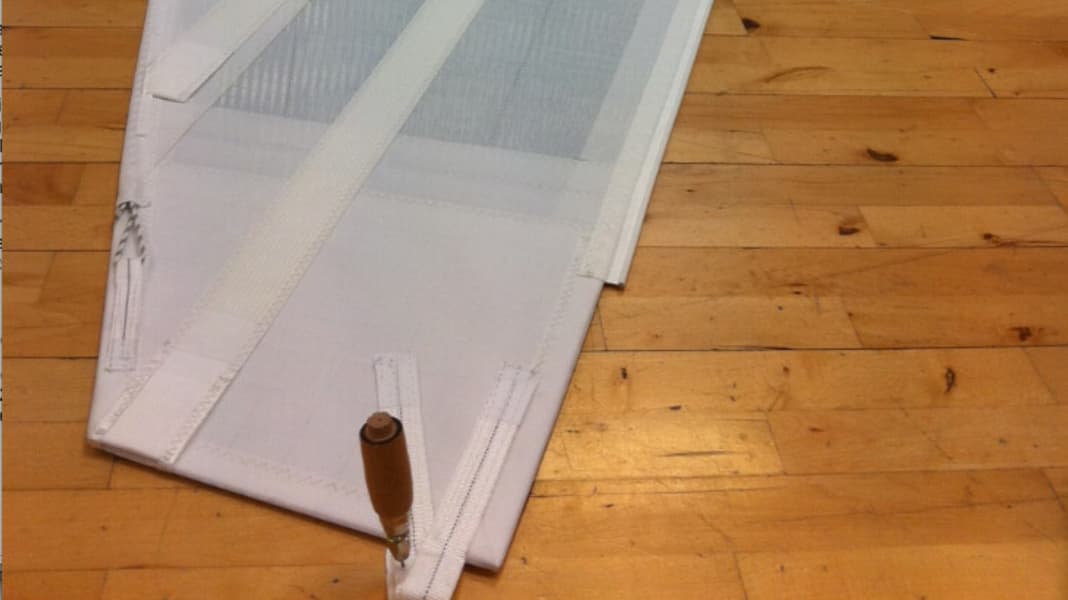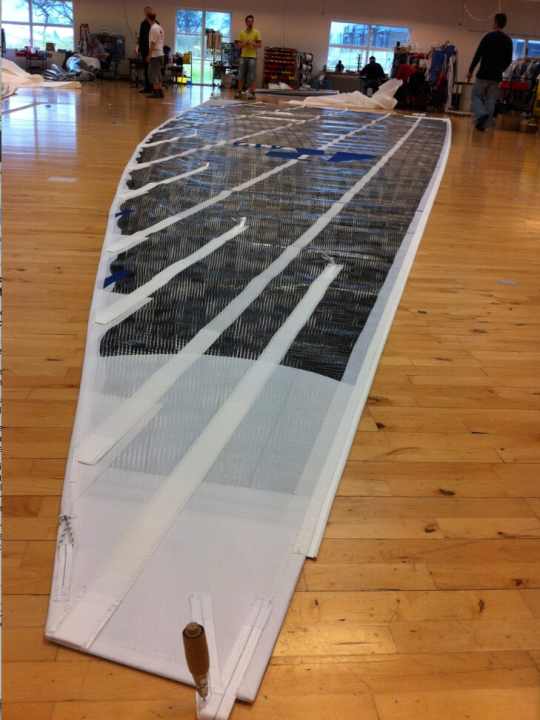
A main with a horizontal instead of a tapered head - this was previously the preserve of conventional rigs. You can see what is known in English-speaking countries as a "fathead" on more and more regatta yachts. All current Volvo Open 70s and Open 60s have them, to name just one example. But they are now also commonplace on sporty cruising cats or monohull yachts. The advantage: more surface area in the top - where the wind blows particularly strongly. Less turbulence. Ergo: more propulsion.
However, the trend was not in favour of furling masts. How are you supposed to choke the multi-reinforced mainsail head into the rig without the cloth delaminating or the mast bending?
Elvstrøm, one of the world's largest sailmakers, has now developed a solution together with Seldén. The Danes have been working on the "wonder sail", as chief sailmaker Søren Hansen says, for over a year. It will later be marketed under the name "FatFurl".

This could equalise one of the last remaining disadvantages of furling mainsails, which they still have in terms of sailing performance compared to conventional cuts. The furling mainsail has already caught up enormously in recent years - thanks to vertical battens and the use of membranes, it has become lighter, more profiled and easier to trim. In future, the flared head will provide a little more surface area, better airflow in the top area and a more striking look.
The "FatFurl" main will be used on the new Hallberg-Rassy 412, which recently celebrated its world premiere at the Hanseboot Ancora Boat Show. The sail, made from the company's own Epex membrane, has been completed in recent days at Elvstrøm's headquarters in Aabenraa, Denmark.
Søren Hansen, who came up with the technology, told YACHT online: "The headboard extends to the backstay and measures 350 millimetres, which is a lot. In addition, there is an over-rounding of 3.3 per cent of the leech length." For the time being, he does not want to reveal exactly how the furling works.
In addition to the new Hallberg-Rassy 412, Elvstrøm has tested the FatFurl technology on a further eight boats - from a Bavaria 32 to the Oyster 63 - and the market launch could take place as early as next autumn. YACHT will soon have the opportunity to carry out detailed tests. We will keep you up to date!
